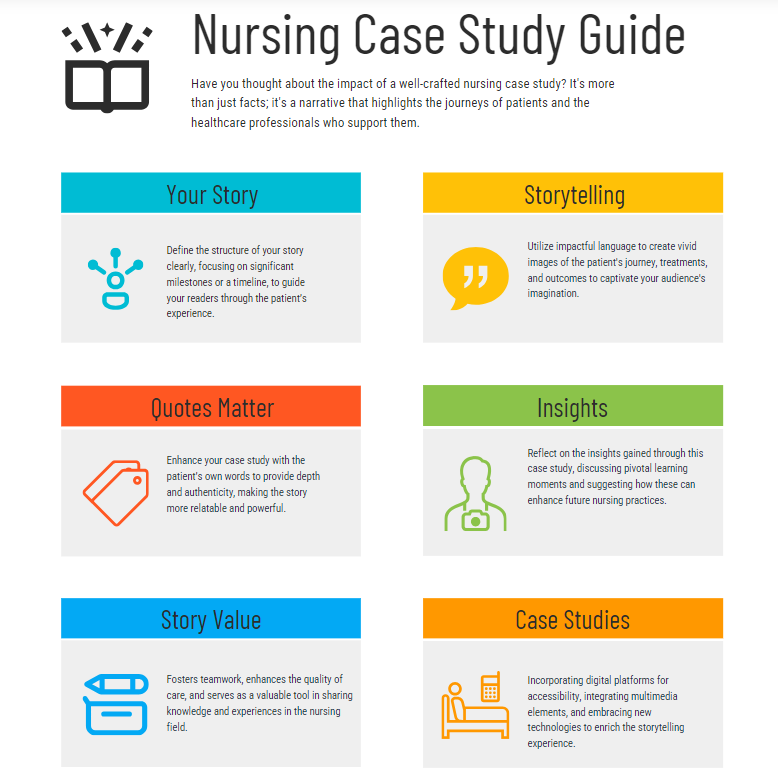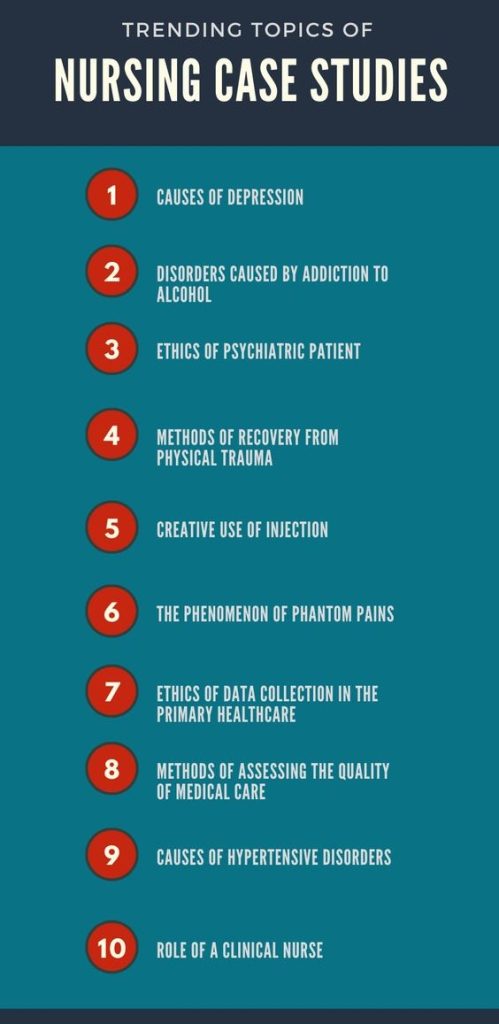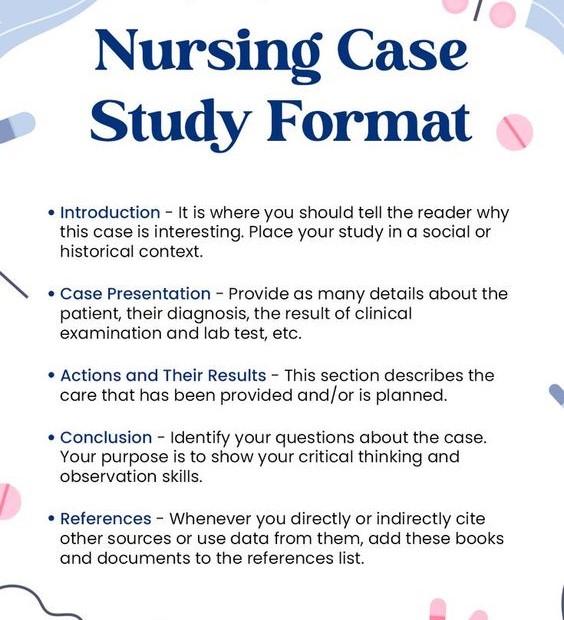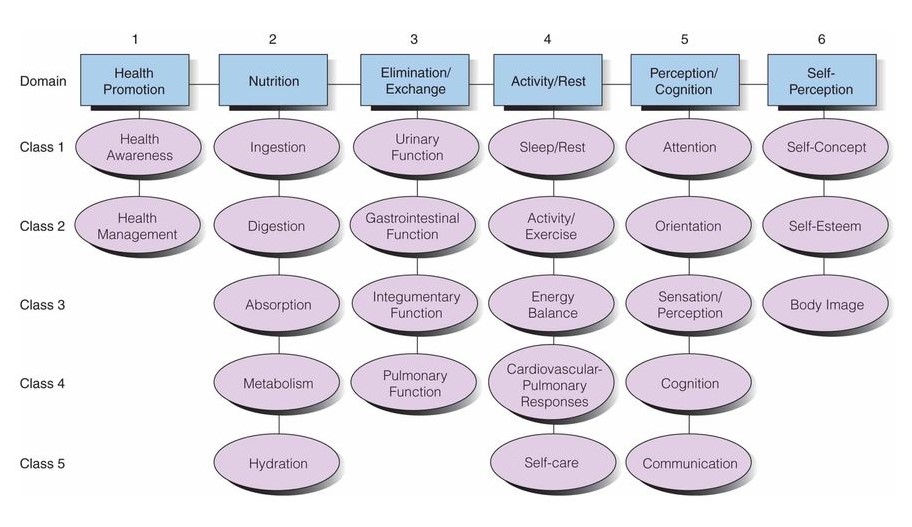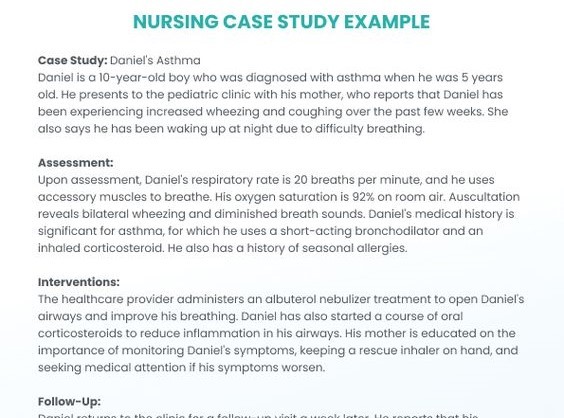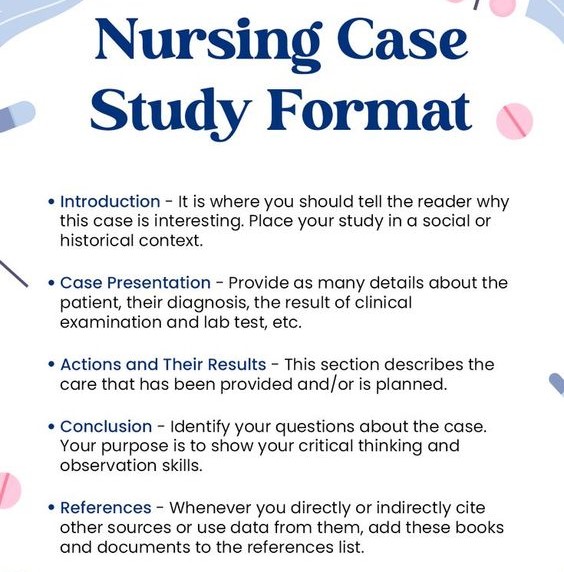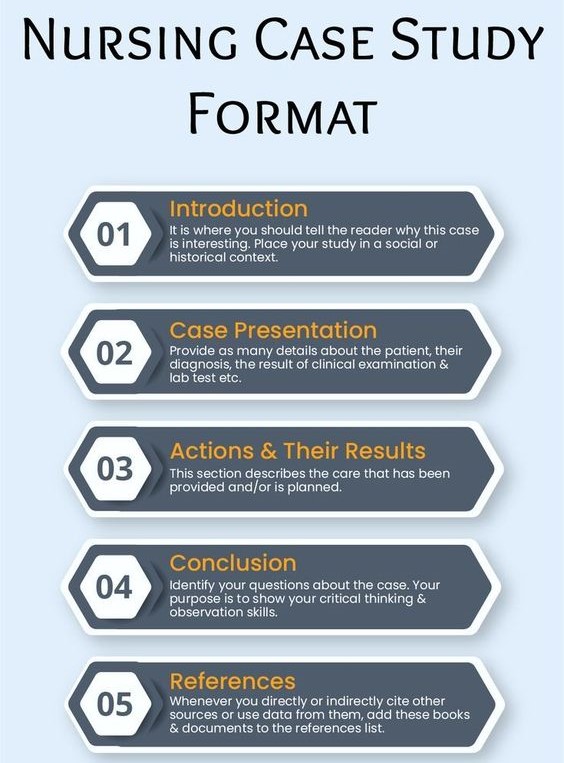
Table of Contents
The case study for nursing is a powerful tool, allowing students and professionals to showcase their critical thinking, clinical reasoning, and application of nursing knowledge. It’s more than just recounting a patient’s experience; a strong case study for nursing demonstrates a deep understanding of the patient’s condition, the nursing process, and evidence-based practice.
This article provides a comprehensive guide on how to write a compelling case study for nursing, ensuring your work stands out for its clarity, accuracy, and insightful analysis.
Steps to Crafting a Stellar Case Study for Nursing
I. Choosing and Defining Your Case Study for Nursing:
Before diving into the writing process, careful selection of your subject is crucial. The ideal case study for nursing should present a significant challenge or unique learning opportunity. Consider patients with:
- Complex medical conditions: Patients with multiple comorbidities or rare diseases offer richer opportunities for analysis.
- Unusual or unexpected responses to treatment: Cases demonstrating unexpected outcomes can highlight the importance of individualized care and critical assessment.
- Ethical dilemmas: Cases involving ethical challenges present opportunities to discuss the application of ethical principles in nursing practice.
- Opportunities for interprofessional collaboration: Demonstrate how nursing interacts with other healthcare professionals to achieve optimal patient outcomes.
Once you’ve chosen a patient, obtain informed consent. Remember, maintaining patient confidentiality is paramount. Use pseudonyms and avoid revealing any personally identifiable information (PII). This is especially crucial when writing a case study for nursing for academic purposes or publication.
II. Structuring Your Case Study for Nursing:
A well-structured case study for nursing follows a logical flow, guiding the reader through the patient’s journey and your analysis. A common structure includes:
- Introduction: Briefly introduce the patient and the presenting problem. State the purpose of your case study for nursing and what aspects you will be focusing on. This section should clearly and concisely set the stage for the rest of your work.
- Patient History: Provide a detailed account of the patient’s medical history, including demographics, relevant past medical history, family history, social history, and presenting symptoms. This section should be thorough but avoid including irrelevant details. Focus on information directly pertinent to the patient’s current condition and your nursing interventions.
- Physical Assessment: Present a comprehensive physical assessment, including vital signs, relevant physical findings, and any diagnostic tests conducted. Be specific and objective in your descriptions. This section demonstrates your competency in performing a thorough and systematic assessment. In a case study for nursing, accuracy is paramount.
- Nursing Diagnosis: Based on your assessment, identify the relevant nursing diagnoses using the NANDA-I (North American Nursing Diagnosis Association International) standardized terminology. Justify your selection of diagnoses using evidence from the patient’s history and assessment.
- Nursing Interventions: Detail the nursing interventions you implemented, citing evidence-based practices and rationales. Explain why you chose specific interventions and how they addressed the identified nursing diagnoses. This demonstrates your understanding of the nursing process and your ability to apply critical thinking to clinical situations. A robust case study for nursing will showcase a thoughtful approach to patient care.
- Evaluation: Evaluate the effectiveness of your interventions. Did the interventions achieve the desired outcomes? If not, why not? This section requires reflective practice and an honest assessment of your actions. This is where you demonstrate your ability to learn from both successful and unsuccessful interventions.
- Discussion: This is the analytical heart of your case study for nursing. Discuss the significance of the case, highlighting key learning points, potential challenges encountered, and implications for future practice. Relate your experience to relevant nursing literature and theories. This section showcases your understanding of the broader nursing context and your ability to connect theory with practice.
- Conclusion: Summarize your findings and reiterate the key learning points derived from the case study for nursing. Re-emphasize the implications for your practice and potential future improvements in patient care.
- References: Always cite your sources using a consistent referencing style (e.g., APA, MLA). A properly cited case study for nursing demonstrates academic integrity and enhances its credibility.

III. Writing Style and Tone for Your Case Study for Nursing:
Your case study for nursing should be written in a clear, concise, and professional manner. Avoid using jargon or overly technical language unless necessary, and always maintain objectivity. Use the third person perspective when describing the patient and your actions. Your tone should be reflective and analytical, demonstrating your critical thinking abilities.
IV. Tips for Writing a High-Quality Case Study for Nursing:
- Focus on a specific problem: Don’t try to cover everything. Focus on a manageable aspect of the patient’s care.
- Use data to support your claims: Back up your assertions with evidence from the patient’s chart, physical examination, and diagnostic tests.
- Be objective: Avoid emotional language and stick to the facts.
- Maintain confidentiality: Protect patient privacy by using pseudonyms and avoiding identifying information.
- Seek feedback: Ask a colleague or instructor to review your case study for nursing before submission. This will help you identify any weaknesses or areas for improvement.
- Proofread carefully: Errors in grammar and spelling can detract from the quality of your work.
Examples of Strong Case Studies for Nursing
Effective case studies for nursing often focus on specific challenges or learning opportunities. Examples include:
- A case study detailing the management of a patient with sepsis, highlighting the importance of early recognition and rapid intervention.
- A case study exploring the ethical implications of end-of-life care decisions, discussing the role of the nurse in supporting both the patient and family.
- A case study analyzing a patient’s response to a specific medication regimen, demonstrating the importance of medication reconciliation and patient education.
These examples illustrate how a well-crafted case study for nursing can provide valuable insights into clinical practice and advance nursing knowledge. Each case study for nursing should contribute to a greater understanding of patient care and demonstrate the nurse’s ability to apply critical thinking and evidence-based practice.
Beyond the Basics: Enhancing Your Case Study for Nursing
To make your case study for nursing truly stand out, consider incorporating these elements:
- Visual aids: Charts, graphs, and other visual elements can help to clarify complex information and enhance readability.
- Reflection on personal learning: Discuss what you learned from the experience, both clinically and personally. How did this case shape your nursing practice?
- Comparison with similar cases: If possible, compare your case to similar cases from the literature to highlight the unique aspects of your patient’s experience.

Avoiding Common Mistakes in a Case Study for Nursing
The case study for nursing is a cornerstone of nursing education, offering a valuable opportunity to apply theoretical knowledge to real-world scenarios. It allows students to hone their critical thinking, problem-solving, and clinical reasoning skills. However, many students stumble during the process, making crucial mistakes that can significantly impact their grades and learning experience. Here are the common pitfalls in writing a case study for nursing and practical strategies to avoid them.
1. Lack of a Clear and Concise Introduction: A weak introduction often fails to establish the context, patient demographics, or the central problem. This leaves the reader confused and unsure of the study’s focus. To avoid this, begin with a concise and engaging paragraph that clearly identifies the patient (using initials to maintain confidentiality), relevant demographic information (age, gender, relevant medical history), the presenting problem, and the overall aim of the case study. Clearly state the purpose – what question are you trying to answer through this analysis?
2. Insufficient Data Collection and Analysis: A successful case study for nursing requires meticulous data gathering. Many students make the mistake of relying solely on readily available information, failing to delve deep enough into the patient’s history, medical records, and assessment findings. This results in a superficial analysis that lacks depth and insight. To avoid this, actively seek diverse sources of data. This includes reviewing medical charts, conducting thorough patient interviews (simulated or otherwise), consulting relevant literature, and documenting observations meticulously. Ensure you analyze the data systematically, identifying patterns, connections, and potential contributing factors.
3. Weak or Missing Nursing Diagnosis: A core component of any case study for nursing is the identification and rationalization of accurate nursing diagnoses. Students often make the mistake of either omitting this section entirely or providing diagnoses that lack supporting evidence from the collected data. To avoid this error, meticulously analyze the collected data to identify actual and potential nursing diagnoses based on the patient’s signs, symptoms, and overall condition. For each diagnosis, clearly state the supporting data and justify your choice based on established nursing frameworks (e.g., NANDA-I).

4. Ineffective Planning and Implementation of Nursing Interventions: The case study for nursing should detail the planned nursing interventions, the rationale behind them, and their effectiveness. A common mistake is to simply list interventions without explaining the reasoning or evaluating their outcome. To avoid this, develop a detailed plan of care that includes specific, measurable, achievable, relevant, and time-bound (SMART) goals for each nursing diagnosis. For each intervention, clearly explain its purpose and how it addresses the specific needs of the patient. Critically evaluate the effectiveness of each intervention based on the observed outcomes.
5. Failure to Evaluate Outcomes and Reflect on Learning: The concluding section should not just summarize the case but also critically evaluate the effectiveness of the interventions, analyze the overall outcome, and reflect on the learning experience. Many students fail to engage in this crucial reflective process. To avoid this, dedicate a substantial portion of your conclusion to a thoughtful evaluation of the patient’s progress and the effectiveness of your interventions. Reflect on what you learned from the case study, what challenges you faced, and how this experience will inform your future practice. Identify any areas where your actions could have been improved.
6. Poor Organization and Presentation: A poorly organized and presented case study can significantly detract from its overall impact. Students often make the mistake of presenting information in a disorganized or unclear manner, making it difficult for the reader to follow the narrative. To avoid this, use a clear and logical structure, with headings and subheadings to guide the reader. Use concise language, avoiding jargon where possible. Ensure proper referencing and formatting according to the required guidelines. Maintain confidentiality by using initials for patient identification.
7. Inadequate Referencing and Plagiarism: Proper referencing is crucial to demonstrate academic integrity and acknowledge the sources used. Plagiarism, even unintentional, can have serious consequences. To avoid this, meticulously cite all sources using a consistent referencing style (e.g., APA, MLA). Paraphrase information instead of directly copying and pasting text, and always use quotation marks for direct quotes.
Avoiding these common mistakes will enable you to significantly enhance the quality of your case study for nursing, demonstrate a strong understanding of clinical reasoning, and ultimately improve your learning experience. Remember that a well-written case study for nursing is a valuable tool for demonstrating clinical competence and fostering critical thinking skills – skills essential for a successful nursing career.
Frequently Asked Questions about a Case Study for Nursing
Case studies are a cornerstone of nursing education, offering a crucial bridge between theoretical knowledge and real-world application. They allow students to analyze complex patient scenarios, develop critical thinking skills, and hone their clinical judgment. However, the process of tackling a case study for nursing can be daunting for many students. This section addresses some frequently asked questions, demystifying the process and helping you confidently approach your next assignment.
What exactly is a case study for nursing?
A nursing case study presents a detailed description of a patient’s situation, including their medical history, symptoms, diagnoses, treatments, and outcomes. It differs from other assignments by focusing on a specific individual, allowing for in-depth analysis of their unique circumstances. The goal isn’t simply to recount the facts, but to analyze the patient’s care, identify potential problems, and propose solutions based on established nursing principles and best practices. This requires critical thinking, problem-solving, and the ability to synthesize information from various sources.
How do I approach a case study for nursing?
Tackling a case study requires a systematic approach. First, thoroughly read and understand the provided information. Identify the key issues and problems facing the patient. Then, consider the relevant nursing theories and principles that are applicable to the situation. Don’t hesitate to consult your textbooks, lecture notes, and other reputable resources. Next, develop a care plan addressing the identified problems. This plan should include specific interventions, rationales for those interventions, and expected outcomes. Finally, critically evaluate the effectiveness of the proposed care plan and suggest areas for improvement.
What are the key elements of a well-written case study?
A strong case study for nursing goes beyond simply listing facts. It demonstrates a deep understanding of the patient’s condition, the application of nursing knowledge, and the ability to critically analyze the situation. Key elements include a clear and concise introduction, a detailed description of the patient’s background and presenting problems, a thorough analysis of the situation using relevant nursing theories and frameworks, a well-developed care plan with clear goals, interventions, and rationales, an evaluation of the effectiveness of the care plan, and a concise conclusion summarizing the key findings and recommendations. Remember to maintain patient confidentiality throughout your analysis – use initials or pseudonyms to protect their privacy.
What kind of resources can I use to complete my case study?
Beyond your textbooks and lecture notes, numerous resources can assist you. Reputable medical journals provide evidence-based information on various conditions and treatments. Online databases like PubMed and CINAHL offer access to a vast collection of research articles. Nursing handbooks and clinical guidelines can provide detailed information on specific procedures and best practices. Always ensure you cite your sources properly to avoid plagiarism. Remember to critically evaluate the information you find and only use reliable and credible sources.
How can I improve my critical thinking skills for case studies?
Developing strong critical thinking skills is paramount for success in nursing and in completing a case study for nursing. Practice analyzing different scenarios, questioning assumptions, and considering alternative perspectives. Engage in active learning by participating in class discussions, asking questions, and seeking feedback from your instructors and peers. Work through practice case studies to build your confidence and refine your approach. The more you practice, the better you’ll become at identifying key issues, developing effective solutions, and writing a compelling and well-supported analysis.
What if I’m struggling with a specific aspect of the case study?
Don’t hesitate to seek help! Your instructors are valuable resources and are available to answer your questions and provide guidance. Utilize tutoring services offered by your institution. Collaborate with your classmates – discussing the case study with others can often provide fresh perspectives and help you identify areas you may have overlooked. Remember, asking for help is a sign of strength, not weakness, and it can significantly enhance your understanding and improve your final product. By approaching your case study with a structured approach and utilizing available resources, you can successfully navigate this crucial aspect of your nursing education.

The Bottom Line
A well-written case study for nursing is a testament to your clinical skills, critical thinking abilities, and commitment to providing high-quality patient care. By following these guidelines, you can create a compelling case study for nursing that not only meets academic requirements but also contributes to the advancement of nursing knowledge and practice. Remember, the aim of a case study for nursing is to share your learning and improve the understanding of complex clinical situations. A thorough, well-written, and thoughtfully analyzed case study for nursing will serve as a valuable asset throughout your nursing career. Therefore, take the time to craft a compelling and insightful case study for nursing.
Hire Professional Nursing Case Study Writing Service
At PhD Nurse Writer, we can help you to craft an authentic and top-notch quality nursing case study. Our service caters for topic suggestion, case study writing, proofreading, editing, formatting and plagiarism removal. We are available round-the-clock to assist you with writing original case studies, research papers, essays and dissertations.


